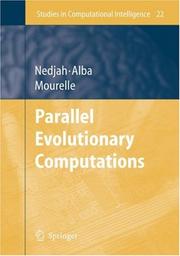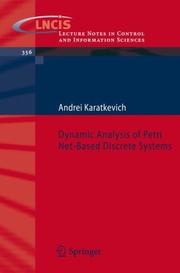| Listing 1 - 3 of 3 |
Sort by
|
Book
ISBN: 9781107005556 9780511794278 9781316606483 9781139078658 1139078658 0511794274 1107005558 9781139080927 113908092X 1107221331 1139063944 Year: 2011 Publisher: Cambridge : Cambridge University Press,
Abstract | Keywords | Export | Availability | Bookmark
 Loading...
Loading...Choose an application
- Reference Manager
- EndNote
- RefWorks (Direct export to RefWorks)
While much has been written on asymmetric aspects of sentence structure, symmetric aspects have been largely ignored, or claimed to be non-existent. Does symmetry in syntax exist, and if it does, how do we account for it? In this book, Barbara Citko sets out to tackle these questions and offers a unified approach to a number of phenomena that have so far been studied only in isolation. Focusing on three core minimalist mechanisms: merge, move and labeling, she advances a new theory of these mechanisms, by showing that under certain well-defined circumstances merge can create symmetric structures, move can target either of two potentially moveable objects, and labels can be constructed symmetrically from the features of two objects. This book is aimed at researchers and graduate students interested in minimalist syntax, the structure of questions, relative clauses, coordination, double object constructions and copular sentences.
Grammar, Comparative and general --- Parallelism (Linguistics) --- Generative grammar. --- Syntax. --- Generative grammar --- Language and languages --- Linguistics --- Grammar, Generative --- Grammar, Transformational --- Grammar, Transformational generative --- Transformational generative grammar --- Transformational grammar --- Psycholinguistics --- Syntax --- Style --- Derivation --- Arts and Humanities --- Language & Linguistics --- Grammaire générative --- Philology --- Grammar, Comparative and general Syntax --- Parallélisme (linguistique) --- Syntaxe

ISBN: 9783540328377 3540328378 9786610615308 1280615303 3540328394 Year: 2006 Publisher: Berlin, Germany ; New York, New York : Springer,
Abstract | Keywords | Export | Availability | Bookmark
 Loading...
Loading...Choose an application
- Reference Manager
- EndNote
- RefWorks (Direct export to RefWorks)
"Parallel Evolutionary Computation" focuses on the aspects related to the parallelization of evolutionary computations, such as parallel genetic operators, parallel fitness evaluation, distributed genetic algorithms, and parallel hardware implementations, as well as on their impact on several applications. The book is divided into four parts. The first part deals with a clear software-like and algorithmic vision on parallel evolutionary optimizations. The second part is about hardware implementations of genetic algorithms, a valuable topic which is hard to find in the present literature. The third part treats the problem of distributed evolutionary computation and presents three interesting applications wherein parallel EC new ideas are featured. Finally, the last part deals with the up-to-date field of parallel particle swarm optimization to illustrate the intrinsic similarities and potential extensions to techniques in this domain. The book offers a wide spectrum of sample works developed in leading research throughout the world about parallel implementations of efficient techniques at the heart of computational intelligence. It will be useful both for beginners and experienced researchers in the field of computational intelligence.
Evolutionary computation. --- Parallel processing (Electronic computers) --- Réseaux neuronaux à structure évolutive --- Parallélisme (Informatique) --- Engineering. --- Artificial intelligence. --- Engineering mathematics. --- Appl.Mathematics/Computational Methods of Engineering. --- Artificial Intelligence (incl. Robotics). --- Evolutionary computation --- Computer Science --- Applied Mathematics --- Civil Engineering --- Civil & Environmental Engineering --- Engineering & Applied Sciences --- Computation, Evolutionary --- Applied mathematics. --- Engineering --- Engineering analysis --- Mathematical analysis --- AI (Artificial intelligence) --- Artificial thinking --- Electronic brains --- Intellectronics --- Intelligence, Artificial --- Intelligent machines --- Machine intelligence --- Thinking, Artificial --- Bionics --- Cognitive science --- Digital computer simulation --- Electronic data processing --- Logic machines --- Machine theory --- Self-organizing systems --- Simulation methods --- Fifth generation computers --- Neural computers --- Construction --- Industrial arts --- Technology --- Mathematics --- High performance computing --- Multiprocessors --- Parallel programming (Computer science) --- Supercomputers --- Neural networks (Computer science) --- Mathematical and Computational Engineering. --- Artificial Intelligence.

ISBN: 9783540714644 3540714642 9786610951604 1280951605 3540715606 Year: 2007 Publisher: Berlin, Germany : Springer,
Abstract | Keywords | Export | Availability | Bookmark
 Loading...
Loading...Choose an application
- Reference Manager
- EndNote
- RefWorks (Direct export to RefWorks)
Design of modern digital hardware systems and of complex software systems is almost always connected with parallelism. For example, execution of an object-oriented p- gram can be considered as parallel functioning of the co-operating objects; all modern operating systems are multitasking, and the software tends to be multithread; many complex calculation tasks are solved in distributed way. But designers of the control systems probably have to face parallelism in more evident and direct way. Controllers rarely deal with just one controlled object. Usually a system of several objects is to be controlled, and then the control algorithm naturally turns to be parallel. So, classical and very deeply investigated model of discrete device, Finite State Machine, is not expressive enough for the design of control devices and systems. Theoretically in most of cases behavior of a controller can be described by an FSM, but usually it is not convenient; such FSM description would be much more complex, than a parallel specification (even as a network of several communicating FSMs).
Petri nets. --- Discrete-time systems. --- Parallel processing (Electronic computers) --- Réseaux de Pétri --- Systèmes échantillonnés --- Parallélisme (Informatique) --- Electronic books. -- local. --- Parallel processing (Electronic computers). --- Digital control systems --- Discrete-time systems --- Petri nets --- Mechanical Engineering - General --- Algebra --- Mathematics --- Mechanical Engineering --- Engineering & Applied Sciences --- Physical Sciences & Mathematics --- Design and construction --- DES (System analysis) --- Discrete event systems --- Sampled-data systems --- Engineering. --- System theory. --- Control engineering. --- Robotics. --- Mechatronics. --- Control, Robotics, Mechatronics. --- Systems Theory, Control. --- Graph theory --- Nets (Mathematics) --- High performance computing --- Multiprocessors --- Parallel programming (Computer science) --- Supercomputers --- System analysis --- Linear time invariant systems --- Systems, Theory of --- Systems science --- Science --- Philosophy --- Systems theory. --- Mechanical engineering --- Microelectronics --- Microelectromechanical systems --- Automation --- Machine theory --- Control engineering --- Control equipment --- Control theory --- Engineering instruments --- Programmable controllers --- Design and construction. --- Automatic control --- Electronic digital computers --- Discrete mathematics
| Listing 1 - 3 of 3 |
Sort by
|

 Search
Search Feedback
Feedback About
About Help
Help News
News